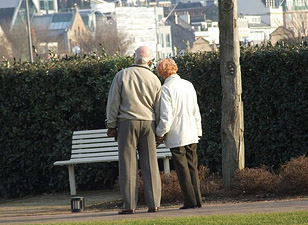
AsianScientist (Aug. 17, 2011) – Taiwanese who exercise for 15 minutes a day, or 92 minutes per week, extended their expected lifespan by three years compared to people who are inactive, according to a study published yesterday in The Lancet.
“Exercising at very light levels reduced deaths from any cause by 14 percent,” said senior author Xifeng Wu, professor and chair of The University of Texas MD Anderson Cancer Center Department of Epidemiology. “The benefits of exercise appear to be significant even without reaching the recommended 150 minutes per week based on results of previous research.”
Lead author Dr. Chi-Pang Wen of the National Health Research Institutes of Taiwan, and colleagues also found that a person’s risk of death from any cause decreased by 4 percent for every additional 15 minutes of exercise up to 100 minutes a day over the course of the study. Those exercising for 30 minutes daily added about four years to life expectancy.
“These benefits were applicable to all age groups, both sexes, and those with cardiovascular disease risk,” the authors note.
The authors likened the estimated reduction in mortality to be similar to that from a successful tobacco control program.
The prospective observational study involved 416,175 Taiwanese who participated in a standard medical screening program run by MJ Health Management Institution between 1996 and 2008. Participants were followed for an average of eight years.
For the exercise study, participants completed a questionnaire covering their medical history and lifestyle information. They characterized their weekly physical activity for the previous month by intensity – light (walking), moderate (brisk walking), vigorous (jogging), or high vigorous (running) – and time.
To account for occupational effects, participants also characterized their physical activity at work, ranging from sedentary to hard physical labor.
Those who reported less than one hour a week of leisure time physical activity were classified as inactive – 54 percent of all participants. Others were classified as low, medium, high, or very high based on the duration and intensity of their exercise.
Thirteen other variables were analyzed: age, sex, education level, physical labor at work, smoking, alcohol use, fasting blood sugar, systolic blood pressure, total cholesterol, body mass index, diabetes, hypertension, and history of cancer.
Those who engaged in low-volume exercise had lower death rates than inactive people regardless of age, gender, health status, tobacco use, alcohol consumption, or cardiovascular disease risk.
The researchers note that the World Health Organization and the US Centers for Disease Control and Prevention recommend at least 150 minutes of moderate-intensity exercise per week. A third of US adults meet that guideline; about 20 percent of adults in China, Japan, or Taiwan meet it.
Wu believes that the study’s findings may also hold true for other populations, even though the total amount of time spent or workout intensity required for a health benefit might differ.
“These findings can stimulate people to exercise as much as they can and to not be frustrated that they can’t reach the 30 minute per day guideline,” he said.
The article can be found at: Wen CP et al. (2011) Minimum amount of physical activity for reduced mortality and extended life expectancy: a prospective cohort study.
——
Source: University of Texas MD Anderson Cancer Center.
Disclaimer: This article does not necessarily reflect the views of AsianScientist or its staff.
#Asian Health Screening Cohort #China Medical University Hospital #Chung Shan Medical University and Hospital #MJ Health Management Insitution #National Taiwan Sport University #Taiwan #Taiwan Department of Health Clinical Trial and Research Center of Excellence #Taiwan National Health Research Institutes












